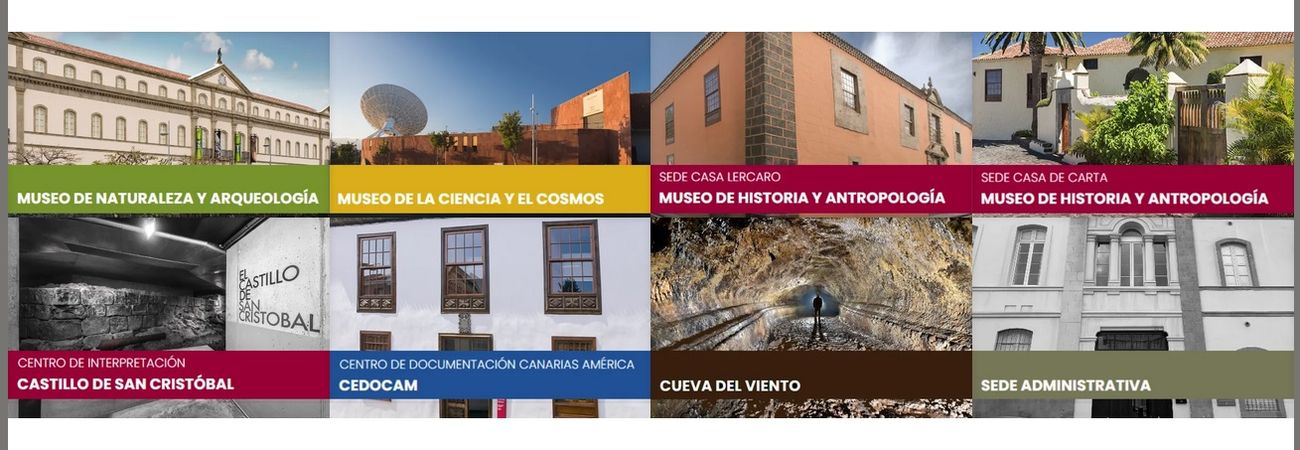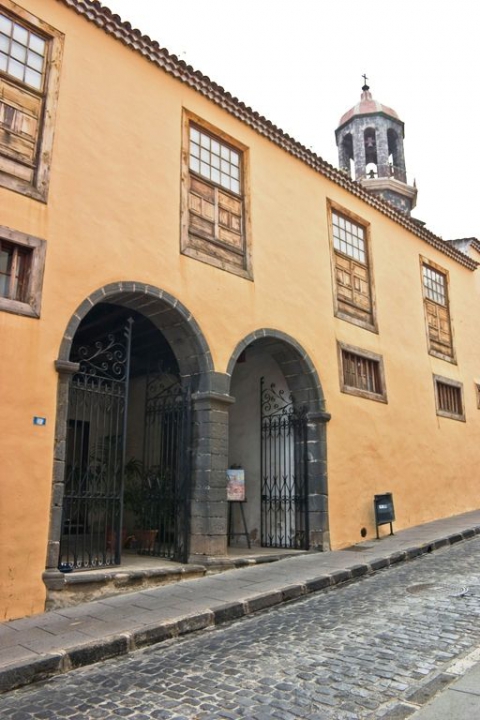La Orotava
Sacred Museum "The Treasure of the Conception"
The Sacred Museum of La Orotava is nicknamed "The Treasure of the Conception" and this name is no exaggeration. The six rooms of the Parish Church of Our Lady of the Conception hold unique pieces of great heritage and religious value, which are still unknown to most Tenerife residents and visitors. The creation of the Sacred Museum "The Treasure of the Conception" in 2007 had as its main objective the reorganization of a valuable set of belongings and objects that had been grouped together as a storage-exhibition facility in the upper rooms of the north sacristy since the 1940s, rooms that were once the parish house. Currently, "The Treasure" occupies the main rooms of the temple: the north sacristy with the anteroom and the Treasury room, the choir, the south sacristy and the chapter rooms.
The Treasure of La Concepción is made up of around a thousand pieces of varied origin: purchased by the parish from the early years of the 16th century to the present day; donations from individuals, or obtained as a result of historical events such as the expulsion of the Jesuits in 1767 or the so-called Mendizábal Confiscation, which allowed the parish to receive many assets after the dispossession of the convents in the area in 1835.
In the north sacristy you can see the best examples of religious painting, such as the Penitent Magdalene, by Domenico Fetti, from 1614, or the Immaculate Conception, painted by Juan de Miranda in 1781.
In the south sacristy there is an excellent example of goldsmithing, such as the embossed silver altar from 1776 or the processional cross, from 1614. The first chapter house is dedicated to the evolution of the history of the parish community and there is the carving of the first Immaculate Conception, from five centuries ago; a spectacular model of the temple, or pieces as curious as the coffin that was lent in the 18th century so that people without resources could be buried, or the altar that was used for Latin masses.
In the second chapter house there is an exhibition of full carvings and images of clothing, both life-size and small, by artists such as Luján Pérez, Fernando Estévez or Blas García Ravelo.
In the anteroom and the so-called treasure room, the visitor can contemplate ornaments and liturgical objects, as well as a large textile exhibition with pieces from the 17th to the 19th century, including damasks, velvets, silks and brocades. You can also see the relics of the first bishop of the Canary Islands, Luis Folgueras de Sión; The Gothic-Manueline Monstrance, the true "crown jewel" of this Sacred Museum, a piece of Portuguese origin made of silver, gold, emeralds and topaz, unique in Spain, or a chalice, also unique, which is only used on Holy Thursday.
Goldsmithing
Among the admirable collection of goldsmithing pieces, the following stand out: the aforementioned Gothic-Manueline style monstrance, from the beginning of the 16th century; a gilded chalice in the style of Philip II; a processional cross, work of Francisco de Matos, 1614; an Italian monstrance for quaking, from 1725. The following are made of silver: the embossed cross from the 18th century, donated by the Marquises of Celada, a tray from the Mexican Baroque, and the lamp of the same style and period from Cuba; apart from the baldachin floats for Corpus Christi. The monstrance and the gilded chalice date from 1768, and the chalice, cruets and bells, in rococo style, in gilded silver, date from 1789, all the work of the well-known master goldsmith from Cordoba, Damián de Castro. Also noteworthy is the so-called chalice of nails, in romantic style, dated 1856; and three wooden lecterns, covered with baroque silver plates, bequeathed in 1716.
Due to its special importance, we will describe the monstrance, in Gothic-Manueline style, from around 1520, worked in gilded silver. The shaft is covered with Gothic tracery, followed by pinnacles and flowered arches. In 1811, emeralds were added to the virile. This monstrance was donated to the church by María Díaz, who miraculously obtained it for thirty reales, perhaps acquiring it from a prisoner or merchant into whose hands it might have ended up, perhaps from Portuguese churches or ships. It is seen as the most important jewel in the treasure.
Walking through these rooms of the parish offers the visitor the possibility of also enjoying a true architectural gem. Special mention should be made of the choir and the spectacular wooden coffered ceilings, of Mudejar origin, in several of the rooms.
New rules for access to the temple
From February 17, 2025, visitors will make a symbolic contribution of €2 to gain access to the temple. The visit will be free for residents of the province of Santa Cruz de Tenerife, children under 6 years of age and duly accredited official tourist guides from the Canary Islands.
https://www.facebook.com/tesoroconcepcionorotava/
Museo de las Alfombras (Carpet Museum)
Inaugurated in June 2007, this museum is located in calle San Francisco no. 5, next to the popular Casa de los Balcones and opens from Monday to Friday from 10 a.m. to 1 p.m.
The carpets are made in La Orotava to celebrate Corpus Christi. This festivity has been commemorated in La Orotava since the town was founded. It gained in importance, however, in the mid-nineteenth century when several members of the Monteverde family, inspired by Leonor del Castillo, created a floral carpet to honour the passing of the Eucharist in front of their house. Since then, La Orotava carpets have circled the globe. This fleeting art attracts thousands of visitors. The museum displays several elements, paintings and sketches related to the making and history of these carpets created using flowers and volcanic sands from Mt. Teide.
Casa de los Balcones (Local Customs) and Casa de Molina
These buildings date from the seventeenth- and late-sixteenth centuries, respectively, and contain a wide range of openwork, embroideries and craftwork from the Canaries. The first building, Casa de los Balconies, contains magnificent examples of Canary Island balconies and courtyards, as well as a museum of local customs.
At Casa de Molina, visitors can admire a smaller version of La Orotava’s acclaimed carpets made from volcanic sands. Opening times: Monday to Saturday from 8.30 a.m. to 6.30 p.m.
C/ San Francisco, 3 y 4
Phone 922 330 629 - Fax 922 331 839
Web: www.casa-balcones.com
MUSEUM OF LATIN AMERICAN HANDICRAFT
C/ Tomás Zerolo - next to the church of Santo Domingo
Tel: 922 321746 - Fax: 922 335811
The restored former Dominican convent now houses the museum of Latin American Handicraft.
There are five rooms laid out on two floors, where only part of their extensive stock is on exhibition: musical instruments, textile crafts, ceramics, fibres and popular art.
The museum holds part of the García Cabrejo textile collection, with objects from the 15th century and more than seven thousand pieces of pottery from the Latin American Co-operation Institute. A visit to the museum also enables you to appreciate the beauty of the convent.
Opening Times: Monday to Friday: from 9.00 a.m. to 3 p.m. Saturday: from 9.00 a.m. to 1 p.m.
http://artenerife.com/en/craft-museum/
PINOLERE ETHNOGRAPHIC MUSEUM
The museum is situated in the Pinolere district, in the upper part of La Orotava, set in the grounds that host the district´s Craft Fair every year.
The exhibition area, with a total area of 3,000 m2, recreates different aspects of the architectural, environmental, agricultural and socio-cultural landscape of the foot hills of the Orotava Valley.
It is organised into two thematic areas: the "Juan Gonzalez Fariña" museum of Canary Island basketwork and the "Francisco Luis Acosta" museum of Pinolere history.
Phone 922 336 733
Opening times: Tuesday to Sunday: from 10:00 to 14:00 h. Monday closed.








